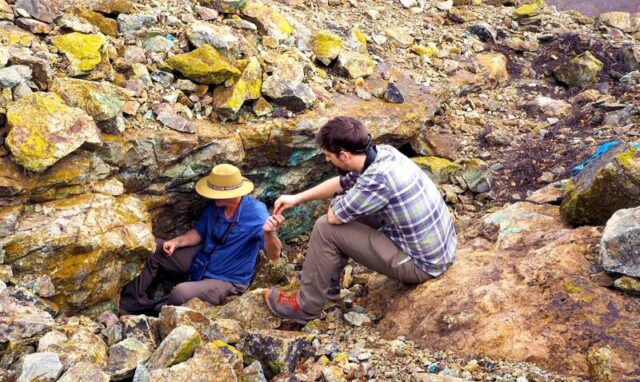Across southern Africa, long-disappeared trade routes once crisscrossed the region and now researchers are following them, thanks to the copper these age-old traders left behind. What they found was a flourishing trade network in operation between the 5th and 20th centuries that connected people from the Copperbelt region in central Africa to northern South Africa.
ACROSS southern Africa, long-disappeared trade routes once crisscrossed the region and now researchers are following them, thanks to the copper these age-old traders left behind.
What they found was a flourishing trade network in operation between the 5th and 20th centuries that connected people from the Copperbelt region in central Africa to northern South Africa.
These connections have come as a surprise to researchers, who have come to realise that trade was happening between people who were thousands of kilometres apart and with it flowed culture and new technology.
Tracing these trade routes came down to scouring museum collections across the region looking for copper artefacts.
“Over the past 20 to 30 years, most archaeologists have framed the archaeological record of southern Africa in a global way with a major focus on its connection to imports coming from the Indian Ocean,” said Jay Stephens, a post-doctoral fellow in the University of Missouri Research Reactor (MURR) Archaeometry Lab.
“But it’s also important to recognise the interconnected relationships that existed among the many groups of people living in southern Africa. The data shows the interaction between these groups not only involves the movement of goods, but also flows of information and the sharing of technological practices that come with that exchange.”
Many of these copper museum artefacts are ingots, and through chemical and isotope analysis, Stephens has been able to follow their journey across the African landscape. It is a journey that moved through the modern day countries of Zambia, Zimbabwe, the Democratic Republic of Congo and South Africa.
Plugging into this trade network, explained Stephens, were people from the contemporary Ingombe Ilede, Harare, and Musengezi traditions of northern Zimbabwe between at least the 14th and 18th centuries AD.
There were occasions when Stephens and his colleagues were able to find the actual kick-off points of these trade routes surviving pre-colonial mines.
“In Botswana, we were able to sample the same veins that were being worked by pre-colonial populations, and that was pretty, pretty special,” said Stephens.
But what is missing from the data so far are those networks that extended south of the Limpopo River into South Africa.
Already there is evidence that early South Africans were moving various types of metal over large distances.
“From objects that we’ve analysed from Zimbabwe and Botswana, we are picking up the signature of some South African ore deposits further to the north,” explained Stephens.
There is also evidence of tin being traded.
“Rooiberg (in Limpopo) is the only known pre-colonial tin mine for the entire region of southern Africa and we see tin moving quite a long distance as well,” said Stephens.
The plan is to in the future look at the South African copper connection. To see how ancient kingdoms like that of Mapungubwe were tied to a complex web of trade that is now slowly being unravelled and understood.







